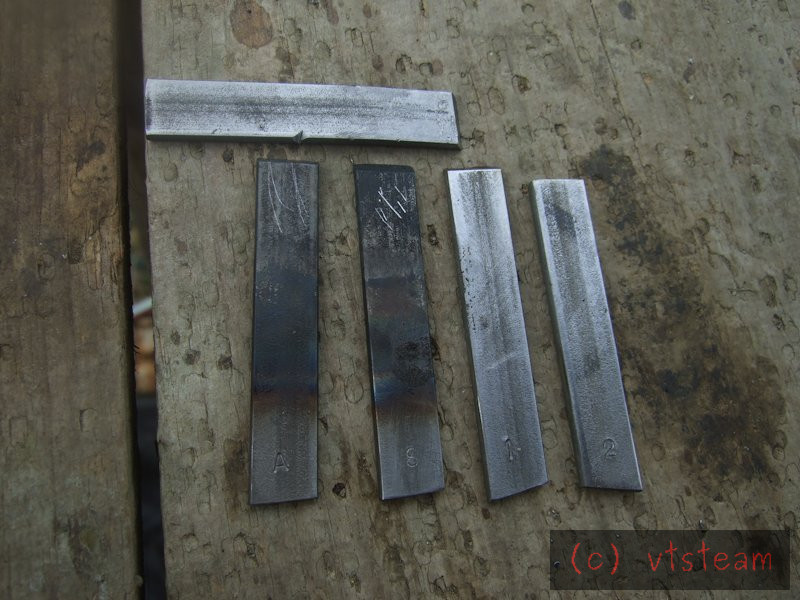I then heated it to cherry red again and plunged it into the water. Result: the metal was hardened and I was able to scratch strip C with it. I was quite pleased! Gosh, sugar works to harden ordinary hot rolled steel !!!
So, next to test the control, I heated strip A (with no sugar) to cherry red and plunged that into the cold water. Result: that, too was hardened and I was able to scratch strip C with it. Well, so much for the first conclusion!
Well, which was harder S, or A?
Scratching them against eachother, it seemed that A would scratch S slightly but not the reverse. Well this was too much, I wanted to make sure, so I sharpened both on a fine stone to give clearer results, and repeated the same case hardening method with each to hopefully increase case depth, and give a better indication.
The result: A definitely scratched S, while S only removed discoloration, but did not scratch into A. And not only that, but clamping C (the unheated control) in a vise and using A as a chisel, I was easily able to cut right into the unhardened control piece. You can see the notch made above A in this photo, and also the deep scratches it made on S.

I also found it possible for a file to remove a small amount of metal from S, but not at all from A.
Conclusion, simply heating and plunging these particular steel pieces into cold water makes a harder tool than using sugar does. If I had done this experiment without a control, I might have assumed sugar was responsible for case hardening this steel.
In fact it appears it may inhibit hardening.